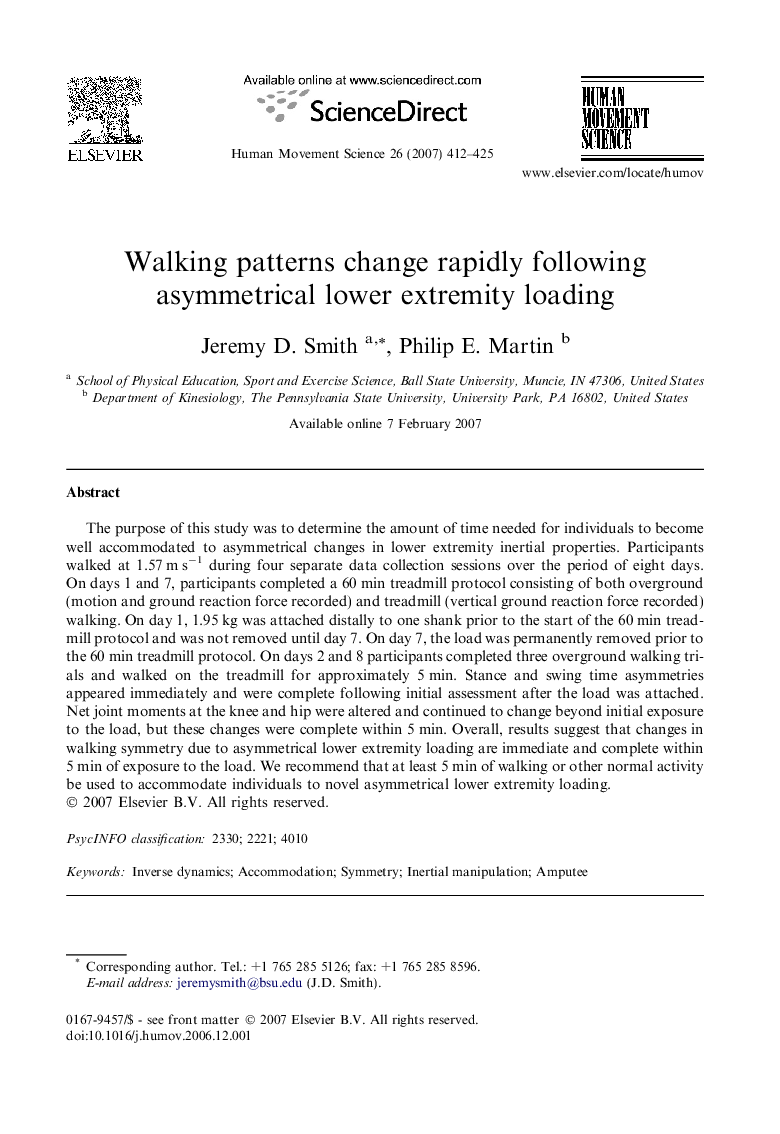| Article ID | Journal | Published Year | Pages | File Type |
|---|---|---|---|---|
| 928855 | Human Movement Science | 2007 | 14 Pages |
The purpose of this study was to determine the amount of time needed for individuals to become well accommodated to asymmetrical changes in lower extremity inertial properties. Participants walked at 1.57 m s−1 during four separate data collection sessions over the period of eight days. On days 1 and 7, participants completed a 60 min treadmill protocol consisting of both overground (motion and ground reaction force recorded) and treadmill (vertical ground reaction force recorded) walking. On day 1, 1.95 kg was attached distally to one shank prior to the start of the 60 min treadmill protocol and was not removed until day 7. On day 7, the load was permanently removed prior to the 60 min treadmill protocol. On days 2 and 8 participants completed three overground walking trials and walked on the treadmill for approximately 5 min. Stance and swing time asymmetries appeared immediately and were complete following initial assessment after the load was attached. Net joint moments at the knee and hip were altered and continued to change beyond initial exposure to the load, but these changes were complete within 5 min. Overall, results suggest that changes in walking symmetry due to asymmetrical lower extremity loading are immediate and complete within 5 min of exposure to the load. We recommend that at least 5 min of walking or other normal activity be used to accommodate individuals to novel asymmetrical lower extremity loading.
